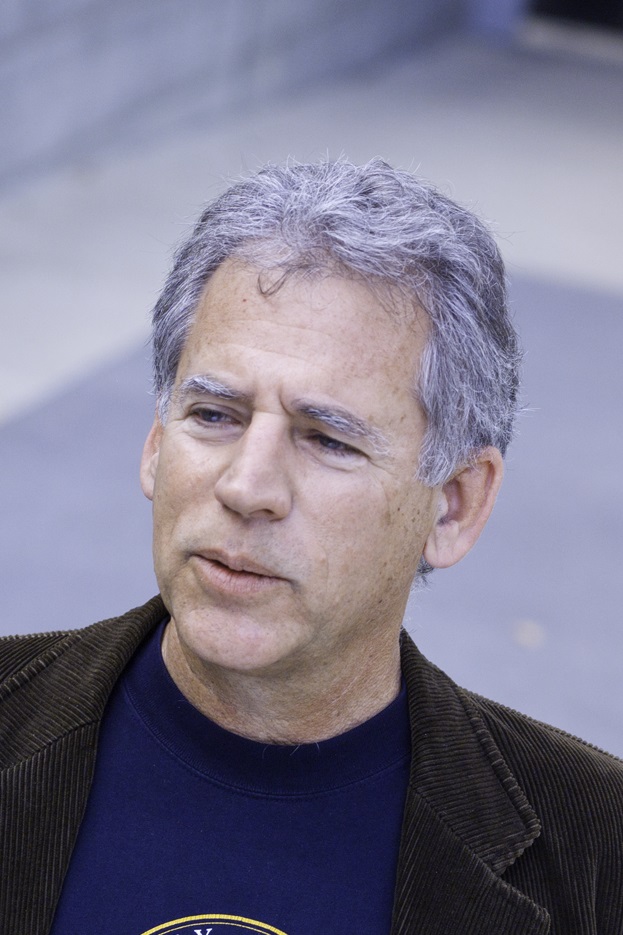Network Newsflash!
UC San Diego Archaeologist Tom Levy Spotlighted as Conference's Most Central and Connected Scholar
By Inga Kiderra
 According to a social network analysis from the University of Toronto, UC San Diego’s Thomas Levy is a key player in Middle Eastern archaeology. He’s not only the most connected scholar in the field, he’s also the only one in the top five to be U.S.-based, too.
According to a social network analysis from the University of Toronto, UC San Diego’s Thomas Levy is a key player in Middle Eastern archaeology. He’s not only the most connected scholar in the field, he’s also the only one in the top five to be U.S.-based, too.
Steven Edwards, an archaeology graduate student in Near & Middle Eastern Civilizations at the University of Toronto, presented his network analysis paper at the 2018 meeting of the American Schools of Oriental Research, or ASOR for short, which brings together scholars focused on the history and archaeology of the Middle East.
Edwards’ paper, “Six Degrees of ASOR” (see abstract at 2018 meeting PDF), analyzed co-authorship of academic papers presented at ASOR’s annual meetings from 2009 to 2018.
To determine connectedness, Edwards generated a network of conference participants and authors. He then calculated various centrality measures that ranked conference-goers according to their influence or importance within the network.
Levy, a distinguished professor in the Department of Anthropology at UC San Diego, came out on top by most centrality measures.
Holder of the Norma Kershaw Chair in the Archaeology of Ancient Israel and Neighboring Lands, Levy heads an active lab of researchers specializing in cyber-archaeology at UC San Diego’s Qualcomm Institute and is also co-director of the university’s Scripps Center for Marine Archaeology.
Figure 1 shows the network graph with node size proportional to “betweenness centrality,” which is a classic approach to centrality that measures how frequently a node lies along the shortest path between any two pairs of nodes, Edwards explained. 
Figure 2 focuses on the section of the network occupied by Levy and his UC San Diego cluster, linking a group of otherwise disconnected researchers on the Madaba Plains Project (labeled MPP) to the main body of the co-authorship network.
“Structurally,” Edwards said, “this means that Levy acts as a hypothetical bridge or funnel through which information flows along various paths in the network. In practical terms, this means that Levy has closer access to new ideas, theories and resources percolating through Middle Eastern archaeology than most people.”
Rounding out the top five best-connected people in Edwards’ network are Yuval Gadot and Oded Lipschits of Tel Aviv University, Aren Maeir of Bar-Ilan University, and Matthew Adams of the W.F. Albright Institute of Archaeological Research. Levy is the only researcher on this list at an institution based in the United States.
 Levy – who was pleasantly surprised at the conference to find himself the star of Edwards’ analysis – attributes his connectedness to his early adoption of the “science model” of publication and research that frequently sees academic papers with multiple authors.
Levy – who was pleasantly surprised at the conference to find himself the star of Edwards’ analysis – attributes his connectedness to his early adoption of the “science model” of publication and research that frequently sees academic papers with multiple authors.
Inspiration for the study came from mathematics – in particular from what are called “Erdős numbers,” Edwards said. Named after important and prolific Hungarian mathematician Paul Erdős, these numbers measure “collaborative distance” between Erdős and authors of academic papers. More than 20 years after Erdős’ death, it remains a popular exercise among mathematicians to determine one’s Erdős number.
But why bother to play this academic version of the “Six Degrees of Kevin Bacon” game?
“Low Erdős numbers are linked to academic achievement,” Edwards said. “Fields medalists and Nobel laureates in physics and economics tend to have low Erdős numbers.”
That’s because connectors, Edwards said, are often the links in social networks through whom information, ideas and opportunities flow.
In a field like Middle Eastern archaeology, with limited tenure-track growth in the academic world and intensely competitive granting schemes, Edwards said, “connecting with people that occupy structurally important positions in social networks can provide major advantages. The first step, however, is to identify the key players, like Erdős in math. In Middle Eastern archaeology, it appears to be Thomas Levy.”
Edwards now hopes to publish his results in a peer-reviewed journal. Stay tuned. UPDATE: The paper is out and here it is in the Ancient Near East Today.
Figures courtesy Edwards.
